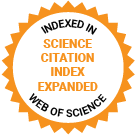Journal of Medical Internet Research
The leading peer-reviewed journal for digital medicine and health and health care in the internet age.
Editor-in-Chief:
Gunther Eysenbach, MD, MPH, FACMI, Founding Editor and Publisher; Adjunct Professor, School of Health Information Science, University of Victoria, Canada
Impact Factor 5.8 CiteScore 14.4
Recent Articles

In recent years, with the rapid development of machine learning (ML), it has gained widespread attention from researchers in clinical practice. ML models appear to demonstrate promising accuracy in the diagnosis of complex diseases, as well as in predicting disease progression and prognosis. Some studies have applied it to ophthalmology, primarily for the diagnosis of pathologic myopia and high myopia-associated glaucoma, as well as for predicting the progression of high myopia. ML-based detection still requires evidence-based validation to prove its accuracy and feasibility.

Young gay, bisexual, and other men who have sex with men have been referred to as a “hard-to-reach” or “hidden” community in terms of recruiting for research studies. With widespread internet use among this group and young adults in general, web-based avenues represent an important approach for reaching and recruiting members of this community. However, little is known about how participants recruited from various web-based sources may differ from one another.

Acute kidney injury (AKI) is a common complication in hospitalized older patients, associated with increased morbidity, mortality, and health care costs. Major adverse kidney events within 30 days (MAKE30), a composite of death, new renal replacement therapy, or persistent renal dysfunction, has been recommended as a patient-centered endpoint for clinical trials involving AKI.



Twitter (subsequently rebranded as X) is acknowledged by US health agencies, including the US Centers for Disease Control and Prevention (CDC), as an important public health communication tool. However, there is a lack of data describing its use by state health agencies over time. This knowledge is important amid a changing social media landscape in the wake of the COVID-19 pandemic.

Requests for public social care support can be made through an online portal. These digital “front doors” can help people navigate complex social care systems and access services. These systems can be set up in different ways, but there is little evidence about the impact of alternative arrangements. Digital front-door systems should help people better access services, particularly low-intensity services (high-intensity care is likely to require a full in-person assessment).

With the increasing interest in the application of large language models (LLMs) in the medical field, the feasibility of its potential use as a standardized patient in medical assessment is rarely evaluated. Specifically, we delved into the potential of using ChatGPT, a representative LLM, in transforming medical education by serving as a cost-effective alternative to standardized patients, specifically for history-taking tasks.

An increase in the prevalence of neurodevelopmental conditions worldwide, alongside resource constraints within clinical services, has led to increased interest in health information technologies, such as apps and digital resources. Digital tools are often viewed as a solution to bridge this divide and to increase supports for families. There is, however, a paucity of research that has evaluated digital health tools, their potential benefits for child neurodevelopment and associated concerns (eg, mental health, well-being), and their benefit for families.

Hospitals use triage systems to prioritize the needs of patients within available resources. Misclassification of a patient can lead to either adverse outcomes in a patient who did not receive appropriate care in the case of undertriage or a waste of hospital resources in the case of overtriage. Recent advances in machine learning algorithms allow for the quantification of variables important to under- and overtriage.
Preprints Open for Peer-Review
Open Peer Review Period:
-
Open Peer Review Period:
-
Open Peer Review Period:
-
Open Peer Review Period:
-



















